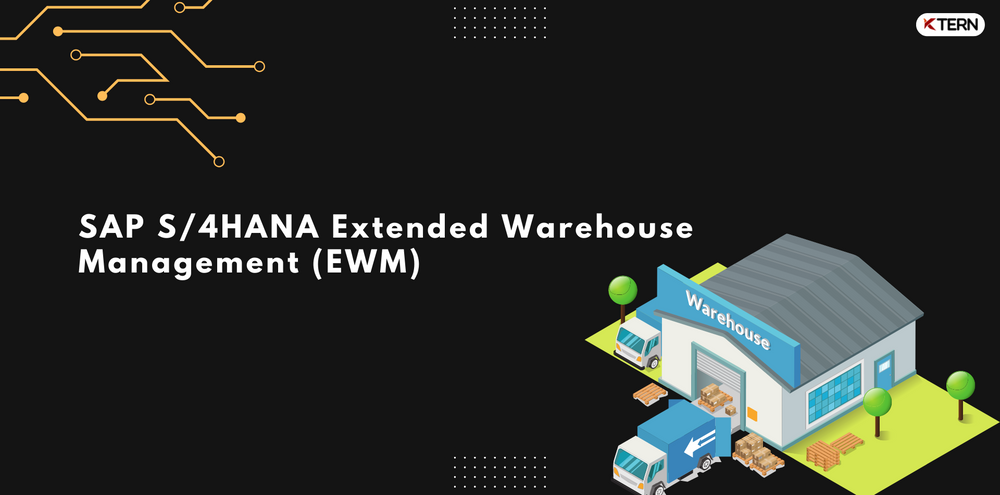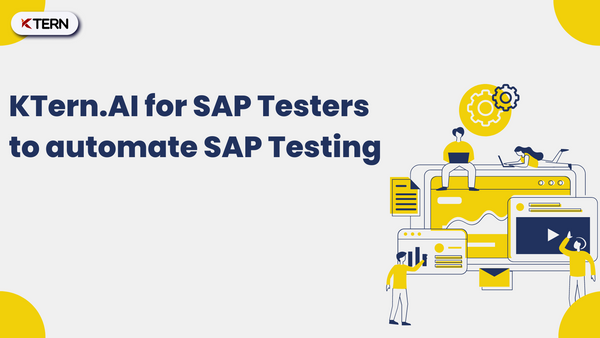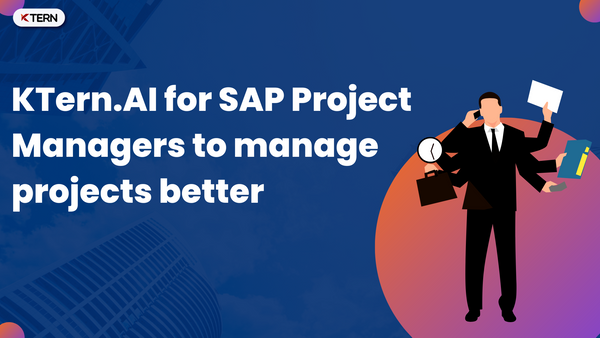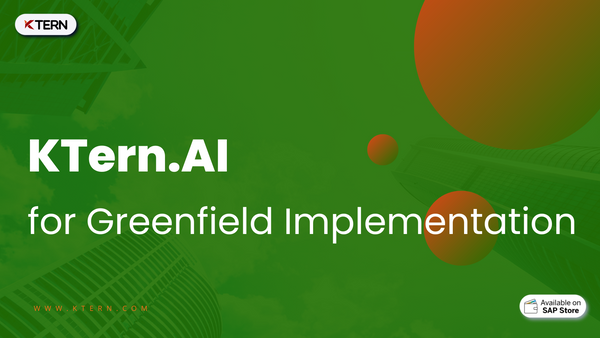SAP S/4HANA Extended Warehouse Management (EWM)
Table of contents:
- S/4HANA Logistics
- SAP S/4HANA Extended Warehouse Management
- What are the differences between Basic EWM and S/4HANA EWM?
- Three operations of SAP S/4HANA Extended Warehouse Management
- Features available in S/4HANA EWM to support the Outbound process
- How will S/4HANA EWM benefit businesses?
- What are the key features of S/4HANA Extended Warehouse Management?
- SAP S/4HANA transformation
- Why S/4HANA transformation is challenging?
- How KTern.AI helps your SAP S/4HANA migration?
- What KTern.AI offers?
S/4HANA Logistics:
SAP S/4HANA Logistics is an individual module present in S/4HANA Business Suite, where organizations can manage their supply chain activities. The logistics module helps the organizations to perform end-to-end operations from raw material procurement to supply of the end product to the customer. S/4HANA Extended Warehouse Management is a part of the Logistics modules, which helps organizations to manage their warehouse operations from inbound to outbound.
SAP S/4HANA Extended Warehouse Management:
SAP S/4HANA Extended Warehouse Management (EWM) is a comprehensive warehouse management system that is designed to help you manage your warehouse operations more effectively. It provides a range of features that can help you streamline your warehouse processes and improve inventory accuracy.
EWM is built on the SAP HANA platform, which offers powerful in-memory computing capabilities. This allows EWM to provide fast and accurate processing of your warehouse data. It also enables you to easily access and analyze your warehouse data for reporting and decision-making purposes.
EWM is a modular system that can be tailored to meet the specific needs of your warehouse. It includes a range of features that can help you manage your operations more effectively, including:
- Warehouse management
- Inventory management
- Picking and packing
- Shipping and Receiving
- Labelling and barcoding
- Automated storage and retrieval
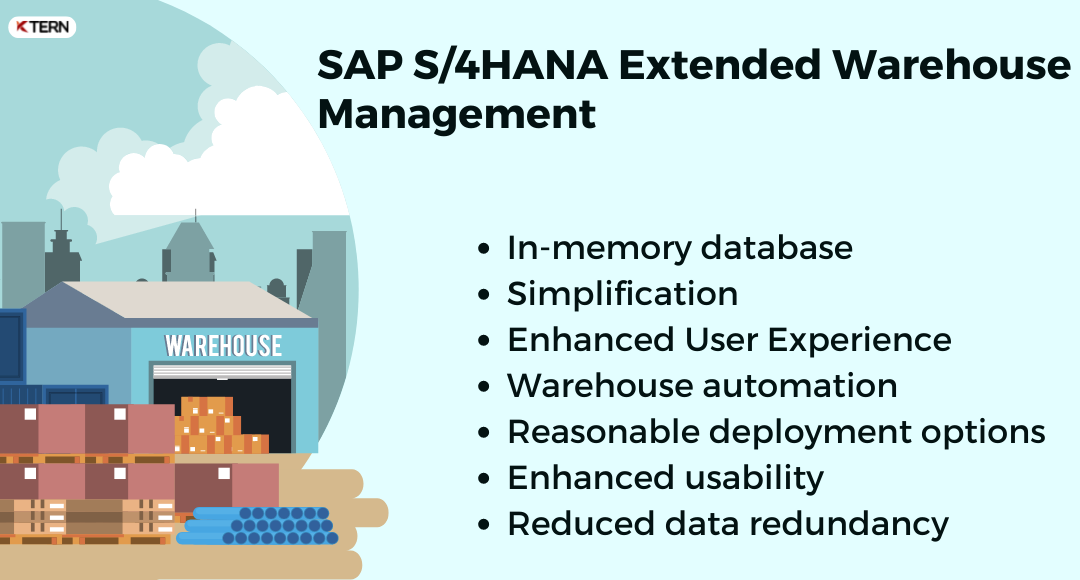
What are the differences between Basic EWM and S/4HANA EWM?
SAP has released two versions of their Extended Warehouse Management Software – Basic EWM and S/4HANA EWM. While both versions offer similar features, there are some key differences between them.
The Basic EWM is targeted at small-scale and semi-automated operations, whereas the Advanced EWM is for advanced operations with more features.
S/4HANA EWM also offers several features that are not available in classic WM, including support for cross-company inventory management and advanced planning and scheduling.
If you are considering upgrading to Extended Warehouse Management, it is important to understand the differences between Basic EWM and S/4HANA EWM.
Three operations of SAP S/4HANA Extended Warehouse Management:
SAP S/4HANA Extended Warehouse Management is designed to perform three major operations inside the warehouse, that is,
- Inbound Process
- Storage and Operations
- Outbound Process
S/4HANA EWM, Inbound refers to the flow of goods into a warehouse, while outbound refers to the flow of goods out of a warehouse. Inbound and outbound processes are typically managed by different teams in a warehouse, and it is important to ensure that the two processes flow smoothly together.
Inbound processes in S/4HANA EWM are designed to optimize the receiving of goods into the warehouse. The system can quickly and accurately identify received goods and match them to the correct shipping information. Inbound processes also include the management of goods that are received in a damaged or defective condition.
The storage and operations represent the functionalities to maintain the internal warehouse activities, such as replenishment, disloading, and physical inventory.
Outbound processes in S/4HANA EWM are designed to optimize the shipping of goods from the warehouse. The system can quickly and accurately generate shipping information, including shipping labels and packing lists. Outbound processes also include the management of goods that are shipped in a damaged or defective condition.
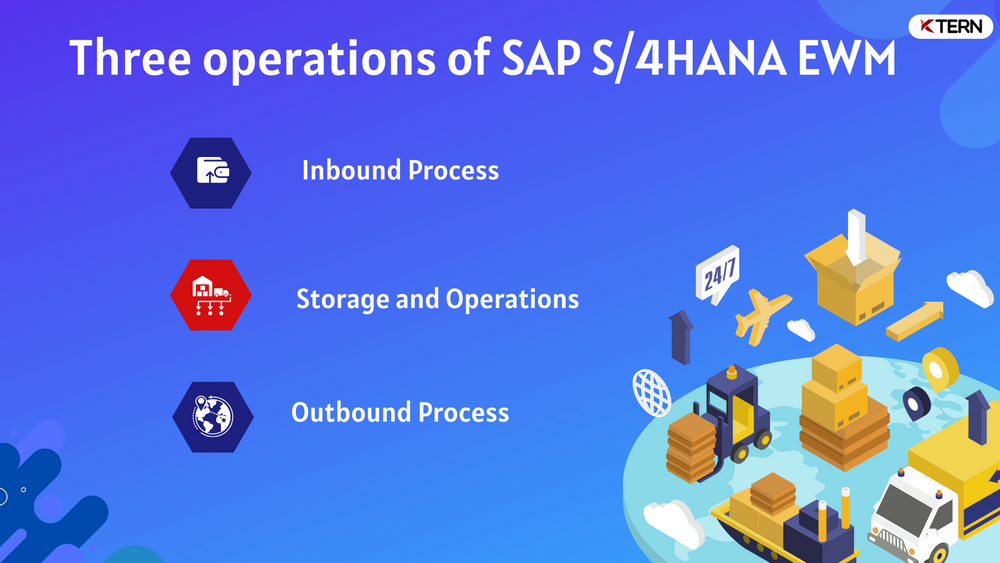
Features available in S/4HANA EWM to support the Outbound process:
The outbound process is a very crucial part of the organization to manage. This requires an efficient and effective tool to perform those operations. The advanced features in S/4HANA Extended Warehouse Management help organizations to perform those operations without any hassle. The following are the key features of the S/4HANA Extended Warehouse Management to support the outbound process.
- Material flow systems
- Warehouse robotics
- Shipping cockpit
- Cartonization Planning
- TM-EWM integration
- Packing Outbound Deliveries
- Pick by voice
- Pick by cart
- Preallocated stocks
- Wave release simulation
- Radio frequency
These features in S/4HANA EWM to support the outbound process help the organizations to,
- Increase inventory accuracy and availability
- Reduce picking, shipping, and billing errors
- Raise customer service levels through high efficiency and accuracy
- Shorten order turnaround times
- Full visibility of warehouse operations
How will S/4HANA EWM benefit businesses?
EWM is a vital module of S/4HANA that helps improve the efficiency and accuracy of business processes. It allows businesses to manage inventory and optimize stock levels, track and manage orders, and manage supplier relationships. In addition, EWM can help businesses reduce the cost of inventory and improve customer service.
What are the key features of S/4HANA Extended Warehouse Management?
The key features of S/4HANA EWM are its advanced planning and scheduling capabilities, its ability to manage multiple warehouses and production sites, and its comprehensive inventory management features. S/4HANA EWM also offers powerful analytics capabilities that can help businesses optimize their supply chains.
If you're looking for an efficient way to manage your warehouse operations, then SAP S/4HANA Extended Warehouse Management is the solution for you. It offers a wide range of features that can help you improve your productivity and efficiency.
SAP S/4HANA transformation:
The transformation from the existing SAP ECC system to the next version of the SAP system, that is SAP S/4HANA is the recent goal of many organizations to enhance their productivity and agility. This transformation improves the efficiency of the operations done inside the organizations. Therefore, every organization is planning to upgrade their SAP ECC system to keep themself updated and agile organization. It is important to know about SAP ECC vs SAP S/4HANA because it helps you understand the key differences and makes decision-making easy.
Why S/4HANA transformation is challenging?
Over some time, organizations accumulate data that are stored in a database. When it comes to SAP S/4HANA transformation, the upgrade is not just a feature update. It is about migrating to a new database, that is the HANA database.
HANA is an in-memory database developed by SAP for SAP Business Suites. Since it is an in-memory database the processing speed is higher, which makes it as efficient when compared to other database models. The new SAP S/4HANA system exclusively runs on the HANA database, therefore all the existing data on the other database are supposed to transfer to the HANA database.
This transformation of data from the existing SAP ECC system to the S/4HANA system is a major challenge and compatibility issues play a crucial part in the transformation journey. A clear understanding of S/4HANA conversion challenges helps the organization move to the next step, which is planning.
Common challenges and lessons learnt during SAP S/4HANA Migration
How KTern.AI helps your SAP S/4HANA migration?
Once you have understood the common challenges in S/4HANA migration, the next step towards S/4HANA is planning. Building a highly effective plan for your transformation is necessary to complete your S/4HANA transformation journey successfully.
For planning your migration, you have to understand your existing SAP ECC system. To solve this issue and help your transformation journey, KTern.AI comes in.
KTern.AI is a perfectly crafted tool for your S/4HANA transformation. From helping you understand your landscape, KTern.AI offers you support till you optimize your system. This enables the users to perform their transformation journey under one platform, which is KTern.AI.
What KTern.AI offers?
KTern.AI is built over the SAP Activate framework which has six phases, discover, prepare, explore, realize, deploy and run. This is the SAP suggested framework for the S/4HANA migration process. KTern.AI is built in a manner that covers all the phases of this framework.
KTern.AI has the following 5 modules, to support your digital transformation process.
These five modules have their specific functions. An introduction to five streams of KTern.AI will help you understand the product.
Start your transformation journey with us:
I hope this article has given you a brief understanding of the updated SAP S/4HANA Extended Warehouse Management, and the need for the S/4HANA migration. To get started with us feel free to contact us. We are always here to help your digital transformation process.

